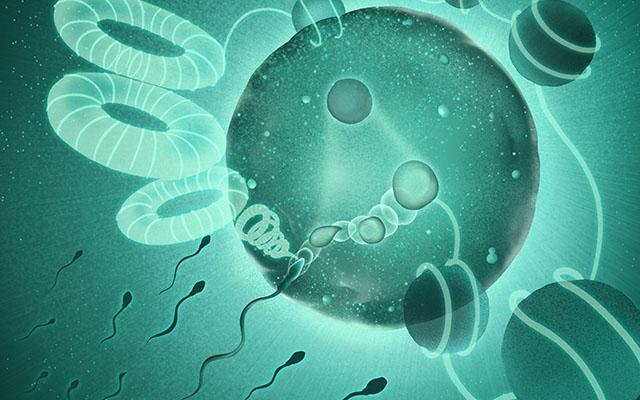
A sperm enters an egg, an embryo develops and eventually a baby is born.
But back up a second — how does the mother’s half-genome actually merge with the father’s half-genome to form one new human genome?
Turns out researchers don’t really know that much about these relatively brief, yet crucial, incipient moments in fertilization.
Researchers at University of California San Diego School of Medicine have discovered that the enzyme SPRK1 leads the first step in untangling a sperm’s genome, kicking out special packing proteins, which opens up the paternal DNA and allows for major reorganization — all in a matter of hours.
The study published March 12, 2020 in Cell.
“In this study, we were simply interested in answering a fundamental question about the beginning of life,” said senior author Xiang-Dong Fu, PhD, Distinguished Professor in the Department of Cellular and Molecular Medicine at UC San Diego School of Medicine.
“But in the process we’ve uncovered a step that might malfunction for some people, and contribute to a couple’s difficulty conceiving. Now that we know SPRK1 plays a role here, its potential part in infertility can be further explored.”
Sperm can be up to 20 times smaller than a normal cell in the body.
And while sperm carry only half as much genetic material as a regular cell, it needs to be folded and packaged in a special way in order to fit.
One way nature does this is by replacing histones — proteins around which DNA is wound, like beads on a necklace — with a different type of protein called protamines.
Fu’s team has long studied SPRK1 for a completely different reason: its ability to splice RNA, an important step that enables the translation of genes to proteins. They previously showed that SPRK1 is over-activated in colon cancer, and they developed inhibitors to dampen the enzyme.
But back in 1999, shortly after Fu published a paper that first described the enzyme’s role in RNA splicing, a research group in Greece noted similarities in the sequence of amino acid building blocks that make up SPRK1 substrates (the proteins upon which the enzyme acts) and protamine.
Fu thought about it for years, but didn’t have the expertise and tools to study sperm development. In 2015, Lan-Tao Gou, PhD, was interviewing for a position as postdoctoral researcher when Fu realized that with Gou’s experience in spermatogenesis, he finally had the right person for the job.
“I said to Lan-Tao, let’s do something nobody else is doing. I have a theory and you have the expertise,” Fu said. “So we borrowed the equipment we needed and leveraged the core facilities we have here at UC San Diego.
“And, surprisingly, everything we tried supported our hypothesis — SRPK1 leads a double life, swapping protamines for histones once sperm meets egg.”
According to Fu, SPRK1 most likely started out playing this role in early embryogenesis, then later evolved the ability to splice RNA. In this way, SPRK1 gets to stick around even when it’s no longer needed for embryogenesis.
Fu, Gou and team next want to determine the signals that instruct sperm to synchronize with the maternal genome.
“We have a ton of new ideas now,” Fu said. “And the better we understand every step in the process of spermatogenesis, fertilization and embryogenesis, the more likely we are to be able to intervene when systems malfunction for couples struggling with reproductive issues.”



